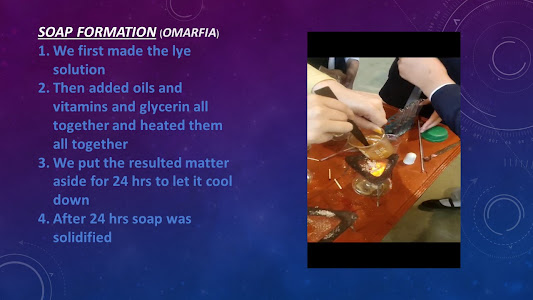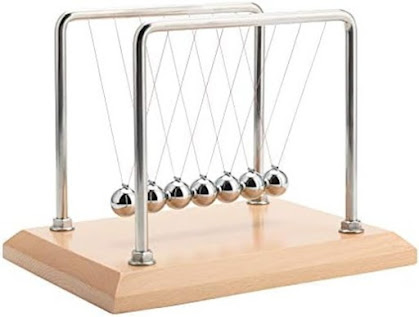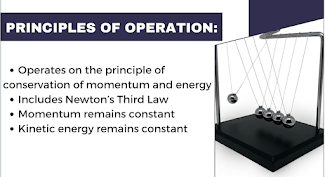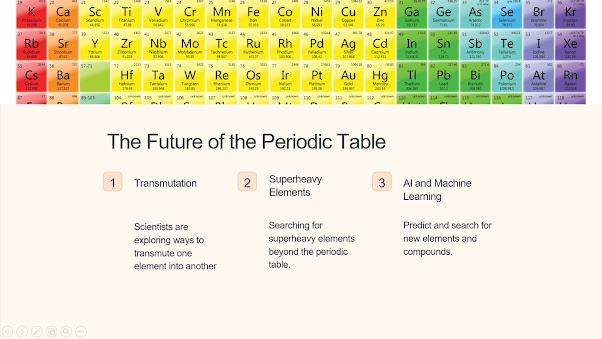Friday, January 26, 2024
Wednesday, January 24, 2024
Topic: Prevalence of genetically acquired Breast Cancer in the Abbottabad region.
Authors: Areeba, Ajwa Munir, Ajwa Inshaal,
Emaan, Amna, Amina Ali Khan, Dua Rehman
ABSTRACT:
Breast cancer is the most common malignancy in women in the world and second leading cause of cancer-related death. However, in patients with a suggestive personal and/or family history, a specific predisposing gene is identified in some cases. In this study we looked for genes associated with breast cancer and how these inherited genes can play part in breast cancer development. For this purpose 168 Breast cancer patient’s data was retrieved and after going through their recorded history and biopsy reports. We found out that only 8 patients had genetic mutations. 3 out of 8 had reportedly BRCA-1 mutations. 5 out of 8 had BRCA-2 gene mutation. these findings show that the probability of genetically inheriting the mutated gene is still 2-4% which is approximately close to the probability shown by other researchers i.e., 5-7 percent which was observed during our literature review. This study can lead to the innovation in breast cancer therapy by targeting mutated genes and can help to prevent the incidence of breast cancer.
INTRODUCTION:
Cancer is a disease in which some of body cell grow uncontrollably and spread to other parts of body. Cancer can start almost anywhere in human body which is made up of trillions of cell. Normally human cells grow and multiply to form new cells as body needs them when cells grow old and become damaged they die and new cells take their place. Some times, this process break down and abnormal cells grow and they form tumors and different type of cancer. When abnormal lungs cell grow it causes lung cancer. Similarly when abnormal breast cell grow out of control it form tumor it is called breast cancer.
Breast cancer is abnormal breast cell growth that form tumor. Breast cancer is most prevalent type of cancer in world. Breast cancer is a disease in which certain cells in the breast become abnormal and multiply uncontrollably to form a tumor. Throughout world Cancer poses major health risk for women. Every year one million women diagnosed with breast cancer worldwide. One of the first signs of breast cancer is usually a lump in the breast or underarm. The lump may be painless at first, but it can grow and become painful. Another symptom to look out for is changes in the shape or texture of your breast. This can include dimpling, puckering, redness, or thinning of the skin on the breast. Breast cancer can also cause pain in the breast that doesn’t go away.
There are a variety of factors that affect your breast cancer risk. Some you can’t change, such as being a woman, growing older, and inheriting a gene mutation linked to breast cancer. But you can change other risk factors such as being overweight, not exercising regularly, smoking cigarettes, drinking alcohol, or eating unhealthy food by making healthier lifestyle choices. You have a higher risk of developing breast cancer if you have close relatives who've been diagnosed with the disease, particularly first-degree relatives, such as your sisters, mother, or daughters. Your risk increases if you have multiple close relatives who have had breast cancer, and if a first-degree male relative (your brother or father) has been diagnosed with breast cancer. In some cases, a strong family history of breast cancer is linked to having an abnormal gene associated with a high risk of breast cancer, such as the BRCA1 or BRCA2 gene.
A hereditary predisposition to breast cancer significantly influences screening and follow-up recommendations for high-risk women. However, in patients with a suggestive personal and/or family history, a specific predisposing gene is identified in <30% of cases. Up to 25% of hereditary cases are due to a mutation in one of the few identified rare, but highly penetrant genes (BRCA1, BRCA2, PTEN, TP53, CDH1, and STK11), which confer up to an 80% lifetime risk of breast cancer. There is no single definition of ‘familial’ breast cancer, but generally accepted criteria include: 1) At least three breast and/or ovarian cancer cases in a family. 2) Two breast cancer cases in close relatives, with at least case diagnosed before age 50. 3)Two breast cancer cases in a family diagnosed before 40 years of age. 4) Any male breast cancer with a family history of ovarian cancer or early onset female breast cancer. 5) Breast and ovarian cancer in the same patient.
Cancers occur when a buildup of mutations
in critical genes, those that control cell growth and division or repair
damaged DNA, allow cells to grow and divide uncontrollably to form tumors. In
most cases of breast cancer, these genetic changes are acquired during a
person's lifetime and are present only in certain cells in the breast. These
changes, which are called somatic mutations, are not inherited. Somatic
mutations in many different genes have been found in breast cancer cells. Less
commonly, gene mutations present in essentially all of the body's cells
increase the risk of developing breast cancer. These genetic changes, which are
classified as germ-line mutations, are usually inherited from a parent. In
people with germ-line mutations, changes in other genes, together with
environmental and lifestyle factors, also influence whether a person will
develop breast cancer.
Some breast cancers that cluster in families are associated with inherited mutations in particular genes, such as BRCA1 or BRCA2. These genes are described as "high penetrance" because they are associated with a high risk of developing breast cancer and ovarian cancer and a moderate risk of developing pancreatic cancer and a type of skin cancer called melanoma in women who have mutations. Men with mutations in these genes also have an increased risk of developing several forms of cancer, including breast cancer, pancreatic cancer, prostate cancer, and melanoma.
The proteins produced from the BRCA1 and BRCA2 genes are involved in fixing damaged DNA, which helps to maintain the stability of a cell's genetic information. They are described as tumor suppressors because they help keep cells from growing and dividing too fast or in an uncontrolled way. Mutations in these genes impair DNA repair, allowing potentially damaging mutations to persist in DNA. As these defects accumulate, they can trigger cells to grow and divide without control or order to form a tumor. The objectives of this research is to find out the genetic correlation between breast cancer and inheritance of mutated genes. Furthermore, this study will lead to collection of data from hospital and analyze the prevalence of breast cancer in Abbottabad region.
MATERIALS & METHODS:
A retrospective observational study was carried out including patients who visited Atomic Energy Cancer Hospital (INOR), Abbottabad from March, 2018 to March, 2023. A total of 168 patients with biopsy proven Breast Carcinoma were included in the study. Data regarding patient’s age, gender, site of involvement, side of involvement, habits regarding tobacco usage, grading of tumor and patient’s address was collected on a structured proforma. Data were retrieved from the biopsy reports.
RESULTS:
168 Breast cancer patient’s data was retrieved and after going through their recorded history and biopsy reports. We found out that only 8 patients out of 168 had genetic mutations.
Graphical representation of collected data on breast cancer
8 out of 168 female patients were recorded
with genetic mutations in BRCA1 and BRCA2genes. 3 out of 8 had reportedly
BRCA-1 mutations. 5 out of 8 had BRCA-2 gene mutation. 1 out of 3 patients with
BRCA1 mutation, had age less than 40 years and 4 out of 5 patients with BRCA2
mutation, had age less than 50 years. Family history of different patients was
also recorded.
We thoroughly observed family history of those 8 patients with BRCA1 and BRCA2 gene mutation and found out that 2 patients had no family history. 5 of them had family history of breast cancer and 1 of them had a mother and grandmother affected from breast cancer. Moreover, a 46 year old female patient had a paternal aunt with breast cancer. Percentage of Genetic mutation in BRCA1 AND BRCA2 genes was 4.8%. Prevalence of BRCA1 mutation related breast cancer was 1.8% and prevalence of BRCA2 mutation related breast cancer was 3%.
CONCLUSION:
According to our findings, we observed that in the region of Abbottabad, the occurrence of genetically acquired breast cancer rate is much lower and most of the cases show somatic mutations. However, these findings show that the probability of genetically inheriting the mutated gene is still 2-4% which is approximately close to the probability shown by other researchers i.e., 5-7 percent which was observed during our literature review. This study can lead to the innovation in breast cancer therapy by targeting mutated genes and can help to prevent the incidence of breast cancer.
REFERENCES:
Stratton MR, Rahman N. The emerging landscape of breast cancer susceptibility.
Zhang B, Beeghly-Fadiel A, Long J, Zheng W.Genetic variants associated with breast-cancer risk: comprehensive research synopsis, meta-analysis, and epidemiological evidence. Lancet Oncol 2011; 12: 477–488.
Apostolou P, Fostira F. Hereditary breast cancer: the era of new susceptibility genes. Biomed Res Int. 2013;2013:747318.
Economopoulou P, Dimitriadis G, Psyrri A. Beyond BRCA: new hereditary breast cancer susceptibility genes. Cancer Treat Rev. 2015 Jan;41(1):1-8.
Filippini SE, Vega A. Breast cancer genes: beyond BRCA1 and BRCA2. Front Biosci (Landmark Ed). 2013 Jun 1;18(4):1358-72.
Foulkes WD. BRCA1 and BRCA2 - update and implications on the genetics of breast cancer: a clinical perspective. Clin Genet. 2014 Jan;85(1):1-4.
Parmigiani G, Berry D, Aguilar O.Determining carrier probabilities for breast cancer-susceptibility genes BRCA1 and BRCA2. Am J Hum Genet 1998; 62: 145–158.
Ferla R, Calo V, Cascio S, et al. Founder
mutations in BRCA1 and BRCA2 genes. Ann Oncol 2007; 18(Suppl 6):
vi93–vi98.
Tuesday, January 16, 2024
Topic:
Group Work
AMNA JALAL
UME HANI ALI
ZEENAT MUJTABA
ZAINAB SHAHID
Abstract:
The Newton's cradle is a
device that demonstrates the conservation of momentum and
the conservation of energy with swinging spheres. When one sphere at
the end is lifted and released, it strikes the
stationary spheres, transmitting a pressure or sonic wave through the
stationary spheres that creates a force that pushes the last sphere
upward. The last sphere swings back and strikes the nearly stationary spheres,
repeating the effect in the opposite direction. The device is named after
17th-century English scientist Sir Issac Newton and designed by
French scientist Edme Mariotte. It is also known as Newton's
pendulum, Newton's balls, Newton's rocker or executive ball
clicker.
History:
The principle demonstrated by the
device, the law of impacts between bodies, was first demonstrated by the French physicist Abbé
Mariotte in the 17th century. His work on the topic was first
presented to the French Academy
of Sciences in
1671; it was published in 1673 as ("Treatise on percussion or shock
of bodies").
Newton acknowledged Mariotte's work,
along with Wren, Wallis and Huygens as the pioneers of experiments on the
collisions of pendulum balls, in his Principia.
Christiaan
Huygens used pendulums to study collisions. His work (On the
Motion of Bodies by Collision) published posthumously in 1703, contains a
version of Newton's first law and
discusses the collision of suspended bodies including two bodies of equal mass
with the motion of the moving body being transferred to the one at rest.
There is much confusion over the
origins of the modern Newton's cradle. Marius J. Morin has been credited as
being the first to name and make this popular executive toy. However, in early 1967, an English
actor, Simon Prebble, coined the name
"Newton's cradle" (now used generically) for the wooden version
manufactured by his company, Scientific Demonstrations Ltd.
Construction:
The largest cradle device in the world was designed by Myth Busters and consisted of five one-ton concrete and steel rebar-filled buoys suspended from a steel truss. The buoys also had a steel plate inserted in between their two-halves to act as a "contact point" for transferring the energy; this cradle device did not function well because concrete is not elastic so most of the energy was lost to a heat build up in the concrete.
Operation:
When one of the end balls ("the
first") is pulled sideways, the attached string makes it follow an upward
arc. When it is let go, it strikes the second ball and comes to nearly a dead
stop. The ball on the opposite side acquires most of the velocity of the first ball and swings in an arc
almost as high as the release height of the first ball. This shows that the last
ball receives most of the energy and momentum of the first ball. The impact produces
a sonic wave that propagates through
the intermediate balls. Any efficiently elastic material such as steel does
this, as long as the kinetic energy is temporarily stored
as potential energy in the compression of the
material rather than being lost as heat. This is similar to bouncing one coin
of a line of touching coins by striking it with another coin, and which happens
even if the first struck coin is constrained by pressing on its center such
that it cannot move.
There are slight movements in all
the balls after the initial strike, but the last ball receives most of the
initial energy from the impact of the first ball. When two (or three) balls are
dropped, the two (or three) balls on the opposite side swing out. Some say that
this behavior demonstrates the conservation of momentum and kinetic energy in
elastic collisions. However, if the colliding balls behave as described above
with the same mass possessing the same
velocity before and after the collisions, then any function of mass and
velocity is conserved in such an event.
Physics Explanation:
Newton's cradle with two balls of equal weight and perfectly efficient elasticity. The left ball is pulled away and let go. Neglecting the energy losses, the left ball strikes the right ball, transferring all the velocity to the right ball. Because they are the same weight, the same velocity indicates all the momentum and energy are also transferred. The kinetic energy, as determined by the velocity, is converted to potential energy as it reaches the same height as the initial ball and the cycle repeats.An idealized Newton's cradle with five balls when there are no energy losses and there is always a small separation between the balls, except for when a pair is colliding Newton's cradle three-ball swing in a five-ball system. The central ball swings without any apparent interruption.
Newton's cradle can be modelled fairly accurately with simple mathematical equations with the assumption that the balls always collide in pairs. If one ball strikes four stationary balls that are already touching, these simple equations can not explain the resulting movements in all five balls, which are not due to friction losses. For example, in a real Newton's cradle the fourth has some movement and the first ball has a slight reverse movement. All the animations in this article show idealized action (simple solution) that only occurs if the balls are not touching initially and only collide in pairs.
Simple solution:
The conservation of
momentum (mass × velocity); p=mv and kinetic energy (1/2 ×
mass × velocity2) KE = ½ mv2 can be used to find the resulting velocities
for two colliding perfectly elastic objects. These two equations are used
to determine the resulting velocities of the two objects. For the case of two
balls constrained to a straight path by the strings in the cradle, the
velocities are a single number instead of a 3D vector for 3D space, so the math
requires only two equations to solve for two unknowns. When the two objects
have the same mass, the solution is simple: the moving object stops relative to
the stationary one and the stationary one picks up all the other's initial
velocity. This assumes perfectly elastic objects, so there is no need to account
for heat and sound energy losses.
Steel does not compress much, but
its elasticity is very efficient, so it does not cause much waste heat.
The simple effect from two same-mass efficiently elastic colliding objects
constrained to a straight path is the basis of the effect seen in the cradle
and gives an approximate solution to all its activities.
For a sequence of same-mass elastic
objects constrained to a straight path, the effect continues to each successive
object. For example, when two balls are dropped to strike three stationary
balls in a cradle, there is an unnoticed but crucial small distance between the
two dropped balls, and the action is as follows: the first moving ball that
strikes the first stationary ball (the second ball striking the third ball)
transfers all of its momentum to the third ball and stops. The third ball then
transfers the momentum to the fourth ball and stops, and then the fourth to the
fifth ball.
Right behind this sequence, the
second moving ball is transferring its momentum to the first moving ball that
just stopped, and the sequence repeats immediately and imperceptibly behind the
first sequence, ejecting the fourth ball right behind the fifth ball with the
same small separation that was between the two initial striking balls. If they
are simply touching when they strike the third ball, precision requires the
more complete solution below.
Effect of different types of balls:
Using different types of material
does not change the action as long as the material is efficiently elastic. The
size of the spheres does not change the results unless the increased weight
exceeds the elastic limit of the material. If the solid balls are too large,
energy is being lost as heat, because the elastic limit increases with the
radius raised to the power, but the energy which had to be absorbed and
released increases as the cube of the radius. Making the contact surfaces
flatter can overcome this to an extent by distributing the compression to a
larger amount of material but it can introduce an alignment problem. Steel is
better than most materials because it allows the simple solution to apply more
often in collisions after the first strike, its elastic range for storing
energy remains good despite the higher energy caused by its weight, and the higher
weight decreases the effect of air resistance.
Uses of Newton's cradle:
Some of the uses of Newton's cradle
include:
Demonstrating conservation of
energy and momentum: Newton's cradle visualizes an elastic collision by
allowing students to see the mass as a number of balls, and the speed as the
height the balls travel. This shows that momentum and energy must be conserved.
Teaching physics
concepts: Newton's cradle can be used to teach concepts such as elastic
and inelastic collisions, gravitational potential energy, and conversion from
potential to kinetic energy.
Entertainment: Newton's cradle can be used for entertainment
purposes by experimenting with the number of balls pulled back, the amount of
energy they start with, and observing the transfer of momentum and energy from
one ball to the other.
Thursday, January 11, 2024
Topic: History of Periodic table
Public School and College Abbottabad
Modernage Girls Campus:
Class: Class 9th
Supervised by : Ms. Nimra Zubair
RESEARCHERS: Insha Zainab
Summaya Shaheen
Horiya Khan
Laraib Qaiser
Fatima Sajid
MEETING DAY : Tuesday, Thursday
MEETING TIME : 3rd Period , BREAK
MEETING VENUE : Computer Lab
Abstract
The periodic table is one of the most iconic accomplishments in the discipline of chemistry, providing as a visual representation of the underlying organization of chemical elements. The history of the periodic table is explored in this research article, from early philosophical hypothesis on the nature of matter to the current classification scheme that serves as the foundation of present-day chemistry. The article highlights how important individuals like Mendeleev and Moseley, as well as later developments in atomic theory, helped to modify the periodic table into what it is today.
Introduction
The periodic table, which displays an organized collection of chemical elements according to their atomic features, is an essential element of modern chemistry. From its earliest philosophical conceptions to its contemporary manifestation, it has gone through significant developments, intellectual disputes and deep truths. This piece of writing aims to explain how the periodic table has changed during the time, noting major events, prominent people, and the evolving theories that have influenced its design.
Ancient Philosophical Foundations:
The nature of matter and the presence of essential constituents were
topics of discussion for ancient Greek philosophers like Empedocles and
Democritus, However, Antoine Lavoisier's revolutionary studies regarding the
conservation of mass and chemical naming did not lay a foundation for
systematic elemental classification until the last decade of the 18th century.
Periodic Table Predecessors:
Both the Law of Triads and the Law of Octaves, respectively, were
proposed by chemists like Johann Wolfgang Döbereiner and John Newlands in an
effort to organize components based on particular patterns and correlations.
Despite its drawbacks, these efforts constructed the way for the eventual
creation of the periodic table.
Mendeleev's genius:
Dmitri Mendeleev's periodic table from 1869 signifies a turning point in
the development of science. He left spaces for yet-to-be-discovered elements
and accurately predicted their properties by arranging the elements according
to their increasing atomic weights. His discovery of the powerful connection
between atomic structure and chemical behavior, is referred as the
periodic law, indicated that the properties of elements are controlled by the
periodicity of their atomic weights.
Contemporary Understanding of Atomic Structure:
The study of atomic structure witnessed a revolution in the early 20th
century with the development of quantum physics and advances in atomic theory.
The drawbacks of earlier structures were addressed by Henry Moseley's
modification of the periodic table based on atomic number rather than atomic
weight after he discovered the connection between atomic number and x-ray
spectra.
Modern Periodic Table:
The elements in the modern
periodic table are arranged into periods and groups and are based on atomic
number. Because the electron configurations of elements in the same group are
similar, assumptions related to the behavior of those elements are possible.
The periodic patterns that control chemical reactions, elemental properties,
and their periodic trends can all be understood using the periodic table.
Beyond Mendeleev's Table:
As new elements are produced and
verified, today's periodic table keeps growing. The so-called super heavy
elements, which are elements with atomic numbers over 118, give problems for
theoretical models and add to our knowledge of nuclear physics.
Chemists who contributed in the making of periodic table:
ANCIENT TIMES:
Antiquity:
Philosophers and alchemists speculate about
the existence of basic elements like earth, air, fire, and water.
17th Century: 1661
Robert Boyle distinguishes between elements and compounds in his book "The Skeptical Chemist."
18th Century: 1789
Antoine Lavoisier publishes "Elementary Treatise on
Chemistry," proposing a list of elements and introducing the concept of
chemical reactions.
Early 19th Century: 1817
Johann Wolfgang Döbereiner formulates the "triads" concept,
grouping elements with similar properties.
1829
Johann Wolfgang Döbereiner discovers the law of triads, which predicts
the properties of missing elements within certain groups.
Mid 19th Century: 1864
John Newlands proposes the "Law of Octaves," suggesting that elements repeat their properties every eighth element.
1869: Dmitri Mendeleev and Julius Lothar Meyer independently publish their periodic tables. Mendeleev's table is more widely accepted due to his successful prediction of missing elements.
Late 19th Century:1871
Mendeleev's periodic table is published in its improved form.
A Russian chemist and inventor. He is best known for formulating the Periodic Law and creating a version of the periodic table of elements.
1894: Lord Rayleigh and Sir William Ramsay discover the noble gases, which lead to the expansion of the periodic table.
20th Century:1913
Henry Moseley establishes the modern periodic law, arranging elements by atomic number instead of atomic weight.
1930: The periodic table is further refined and expanded as new elements are discovered.’
An English physicist, whose contribution to the science of physics was the justification from physical laws of the previous empirical and chemical concept of the atomic number. This stemmed from his development of Moseley's law in X-ray spectra.
Post-World War II: 1952
Glenn T. Seaborg and his team synthesize and identify elements beyond uranium, expanding the periodic table.
2016: The International Union of Pure and Applied Chemistry (IUPAC) officially names elements 113 (Nihonium, Nh), 114 (Flerovium, Fl), 115 (Moscovium, Mc), and 118 (Oganesson, Og).
An American chemist whose involvement in the synthesis, discovery and investigation of ten Trans uranium elements earned him a share of the 1951 Nobel Prize in Chemistry.
21st Century:
Ongoing research continues to explore and synthesize new, super heavy elements, pushing the boundaries of the periodic table.
This provides an overview of the key milestones and
developments in the history of the periodic table. It has evolved significantly
from its early philosophical roots to its current form, reflecting our
deepening understanding of the fundamental building blocks of matter.
The first Periodic Table:
Our Modern Periodic
table, the table for which chemists worked very hard.
There haven't
been any fundamental changes to the structure of the periodic table. However,
there have been ongoing advancements and research in the field of chemistry
that may lead to potential changes or refinements in the future.
Island of Stability:
Scientists have been exploring the concept of an "Island of Stability," which suggests that there might be a range of super heavy elements that are more stable than currently known ones. These elements could have longer half-lives and potentially practical applications in the future.
Reactivity and Applications:
Understanding the properties of newly discovered elements is crucial for potential future applications in various fields, including nuclear physics and materials science. Researchers have been studying the reactivity of these elements to gain insights into their behavior.
Periodic Trends and Predictions:
Ongoing research has improved our understanding of periodic trends and
the behavior of elements within the periodic table. Computational chemistry and
quantum mechanics have played significant roles in predicting and explaining
the properties of elements and their compounds.
Final Remarks:
The history of the periodic table reflects the progressive growth of human understanding of substance and its properties. The periodic table is proof of human ingenuity and scientific progress, from early supposition to Mendeleev's wisdom and later revelations of the atomic theory. It serves as a strong framework that connects various components, promoting unique thoughts into the substance of the material world.
References:
Website
reference:
1. https://chemistry-europe.onlinelibrary.wiley.com/doi/10.1002/ejic.201801409
2. Stephen A. Matlin, Goverdhan Mehta, Henning Hopf, Alain Krief
3.
First
published: 28 March 2019
Book reference:
1.
Paul Strathern, 2000, Mendeleyev's Dream: The Quest for the Elements
2. Robinson,
A. ed., 2023. The Scientists: Pioneers of Discovery. Thames & Hudson.
3. Maes, C., 2023. Facts
of Matter and Light: Ten Physics Experiments that Shaped Our Understanding of
Nature. Springer Nature. Agassi, J.,
2022. The Philosophy of Practical Affairs: An Introduction. Rowman &
Littlefield.
Research Topic: Wonders of Sea Life. Presented by: Grade 1 Students.

-
Written by: Master Ijlal Qamar (1st Year Emerald) ‘Adventure’ It was about 5.00am when we were asked to reach the school for a study tou...
-
Topic: UNVEILING THE HISTORY OF ST. LUKE’S CHURCH, ABBOTTABAD Modernage Girls Campus: Class : Grade 5 By: Aaron Arthur THE HIST...
-
Topic: Sights and Sounds in Modernage Public School and College Abbottabad Modernage Girls Campus: Class : RESEARCH PROJECT ...


































































